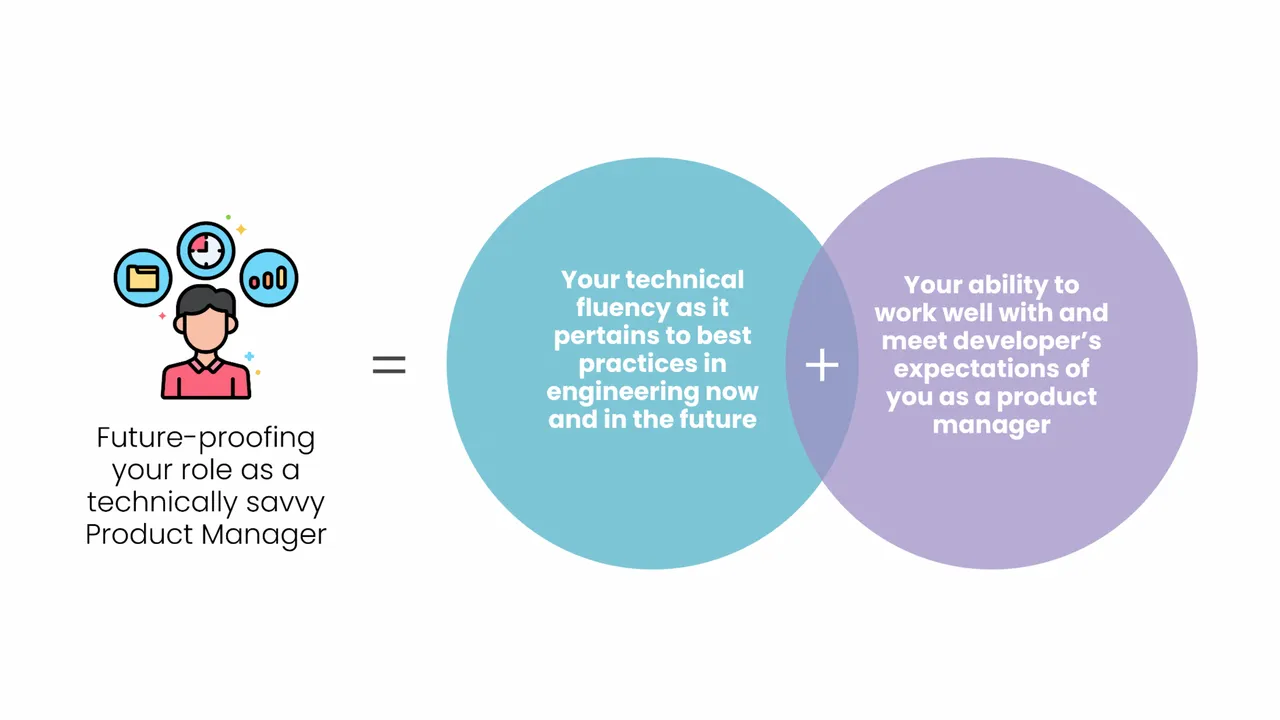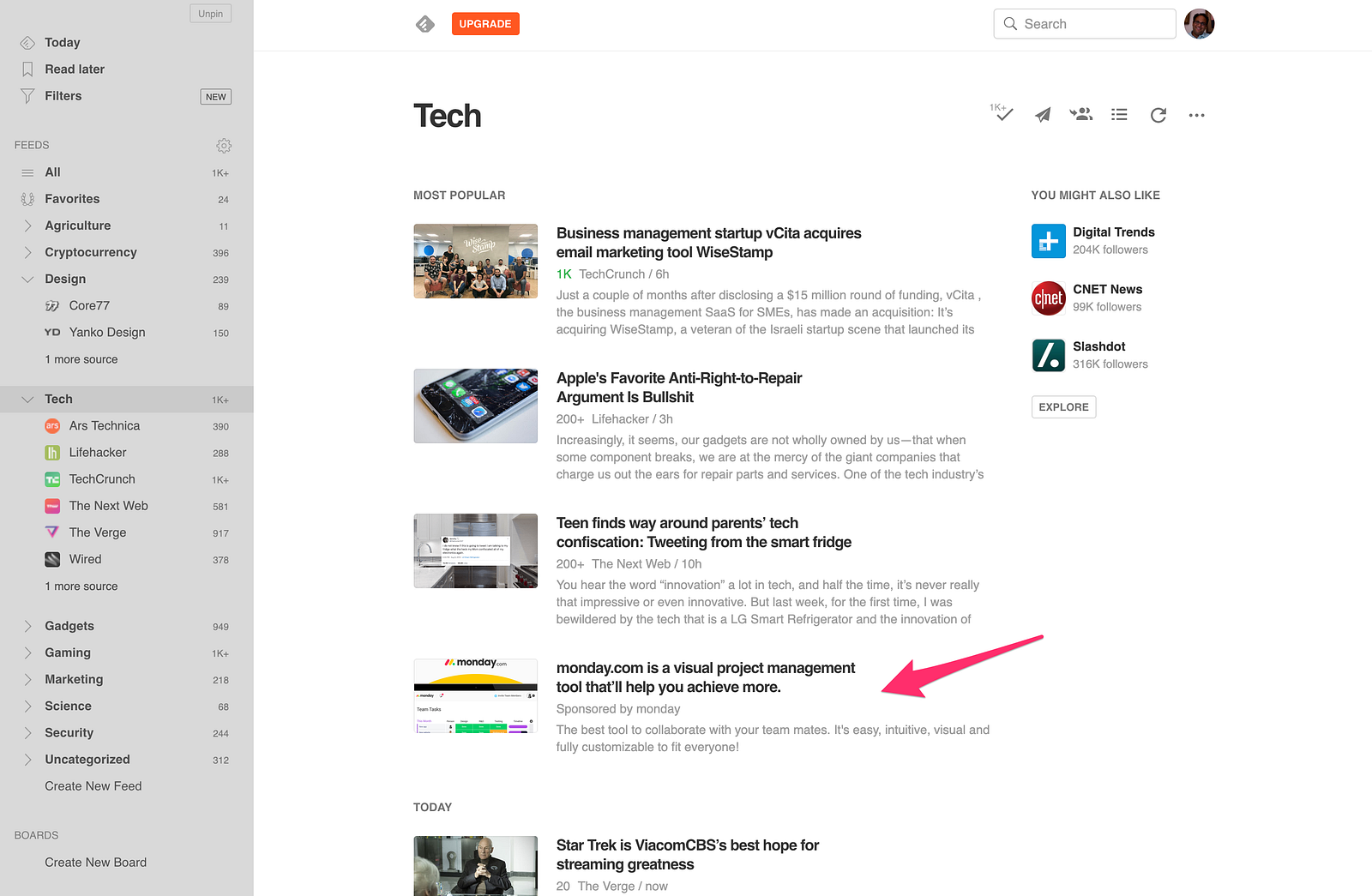Future-proof your role: How to keep up with the latest engineering & PM best practices
Nov 22, 2022
Want to become more technical in just 4 weeks? Find out how the Skiplevel program can help.
“How do I future-proof my role as a PM to ensure that my capabilities/contributions are keeping up with the evolving best practices in engineering and expectations of my PM role?” — Asked by a BizDev manager at Brillio
Dear BizDev manager,
Well, first things first, let’s define “future-proof” to mean taking extra steps to prepare yourself for a changing workforce, especially one where we’re increasingly reliant on technology and software. In relation to the PM role and working with engineering, this means taking steps to improve in two broad areas:
(1) Your technical fluency (knowledge and skills) as it pertains to best practices in engineering now and in the future
(2) Your ability to work well with and meet developer’s expectations of you as a product manager (or really anyone that needs to communicate with devs)

There’s no magic bullet for improving your technical fluency and keeping up with the latest tech trends all at once. You simply don’t have access to the same level of exposure to building software as devs do. And even for devs, keeping up with the latest tech trends is like playing a game of whack-a-mole. Technology simply evolves too fast.
So what’s the magic sauce? How should you approach future-proofing?
First, ditch the mindset that you need to be 100% kept up with and aware of the latest tech trends and best engineering practices at all times. Technology is too complex and moves too fast for that to be a realistic goal.
Ok, now that the pressure is off, you should approach future-proofing your PM skills as it relates to engineering in two ways: keep up with news happening in the industry through external sources, and through personal support from someone in engineering.
- External sources: Keep an eye on new terms, tools, and tech trends in convenient and digestible ways via social media (most notably twitter), tech & PM newsletters and using content aggregator tools like twitter bots and RSS feeds.
- Personal support: Get 1-on-1 support through cross-functional tech mentorship and an open line of communication. This is the best way to stay up-to-date with what devs expect of you as their PM.
Keep an eye on best practices & tech trends via convenient, digestible bits of information
Keeping an eye on trends means you need access to what’s going on in software. There’s lots of ways to do this, like attending popular tech conferences, signing up for newsletters, reading tech news websites, etc.. but these options can be overwhelming and time and energy intensive.
The key is to consume content in a convenient and digestible way. Here are some super easy ways to do that:
(1) Follow tech leaders and communities on Twitter
If you’re not on Twitter, get on Twitter. Twitter is a content-rich, convenient place to keep up with the latest and greatest in software from leaders in the field. You don’t have to post if you don’t want to–it’s perfectly fine to just lurk.
Carve out an hour of your time to follow PM & dev leaders and communities on Twitter. I tweet regularly about tech knowledge for PMs at @iamireneyu. I also suggest following the Product Twitter community, and the Tech Twitter Community to start. Browse around and search for folks and communities that interest you.
Other social media platforms like LinkedIn have great content from tech leaders as well, but I like how Twitter’s content is much more digestible due to the tweet character count limit.
(2) Save, highlight, and re-visit valuable content using a tool like Readwise
Pro-tip: Use Readwise to quickly save and aggregate Tweet content you find interesting. All you have to do is comment “@readwise save thread” on a tweet or thread that you like and it’ll automatically save it to your Readwise dashboard.
Readwise will surface your best highlights back to you at the right times, and let you review them every day with the daily email and app. You can even tag content with “PM” or “Engineering” so you can easily find past content when you need it.
This is a great way to keep up with evolving best practices in engineering and product management by keeping everything in one place!
Note: There are other Twitter aggregator tools out there like Save To Notion, so pick one that suits your needs best!
(3) Follow these tech & PM newsletters
Newsletters dedicated to the latest technologies are another great way to keep up with trends and latest engineering practices.
Here are a few newsletters I recommend following to keep up with the latest best practices in engineering and product management:
- Technically: Technically explains software and hardware in a simple and engaging way so you can impress your boss.
- Pointer: A window into what current and future CTOs are reading and thinking about.
- ByteByteGo: A popular weekly newsletter covering topics and trends in large-scale system design, from the authors of the best-selling System Design Interview series. Note: The content in this newsletter is super technical and created mostly for devs. Don’t worry about trying to understand it all, just scan the content so you’re able to recognize terms.
- One Knight in Product: Latest PM hot takes and discussions from top PM thought leaders & practitioners from the One Knight in Product podcast.
- … and more if you visit the explore pages of popular newsletter providers like Ghost and Substack.
(4) Use an RSS feed aggregator
Pro-tip: Use an RSS feed to aggregate all your latest tech, eng & PM newsletters in one place. An RSS feed automatically grabs updates from websites and aggregates it into one simple view. You can follow websites, newsletters, Medium blogs, Twitter timelines/hashtags/lists/searches, and Reddit feeds.

I personally use Feedly as my RSS aggregator, but there are many options. Here’s a list to start from Wired magazine.
Spend time going deep on technical topics only when it serves a goal
The tips above will help you keep abreast of new terms and best practices, but you should only go deep on learning about them when you need it.
For example, when you’re interviewing for a new company, grill the recruiter on the product’s tech stack and get as much info on the company’s best practices as possible. Let’s say the recruiter mentions the term “microservices”. You recall seeing this term in a tweet or article somewhere and know it’s related to software architecture.
Now you can take the time to do research on microservices. Use your RSS feed or Readwise to revisit the content. Check if the company has a dev blog where developers blog about how they build what they build (here’s one from Dropbox). Do a Google search!
Or in your current role, ask developers about their best practices and how they build their software (more details about this below).
The important thing to remember here is to only spend the time and effort to go deep when there’s actually a goal in mind. You’ll be better able to retain the content when you’re actually motivated to do it.
Get 1-on-1 personalized mentorship from your technical counterparts
Online and external content is great and tremendously helpful, but the best way to keep on top of the newest trends and engineering best practices is through 1-on-1 tech mentorship because nothing satisfies your curiosity more than getting personal attention and answers to all your burning questions.
So what‘s tech mentorship exactly?
Tech mentorship is where you hold regular meetings with a dev, TPM, or anyone with strong technical expertise to learn about best practices in software, how software is built, and ask all the “stupid” questions you want.
It’s a pretty simple concept but super powerful. Think of tech mentorship as regular mentorship the way you would with a more senior product manager (or whichever role you’re in), except it’s cross-functional.
Here’s how to do it:
- Identify someone who is technical and who you communicate well with. It’s best for this person to be a developer that currently works on your product so not only can they teach you general software knowledge, but they can also share domain knowledge about your product.
- Reach out and ask if they’d be willing to mentor you on a regular cadence. I suggest a starting cadence of 2x monthly and on an as-needed basis (i.e. after a PM-dev meeting). In your outreach email, be clear about what you’re struggling with, what you’re trying to achieve, and why you think the other person would make a great mentor!
- Schedule recurring 30 minute tech mentorship video meetings on the calendar.
- To make the most out of each meeting, bring a piece of facilitating content and/or list of questions/topics you want to discuss. For example: a tweet you read on the latest agile best practice popular with engineering teams, an architecture diagram you saw in the dev docs, something mentioned during an engineering meeting.. you get the point.
- Don’t forget to ask your tech mentor how you can help enable their work. This is the best way to know what’s expected of you as PM and to build a better relationship with your engineering team.
If you have the bandwidth, I even recommend finding two or more separate tech mentors since every engineer has their own expertise and you can likely learn something different from each one (i.e. front-end devs vs. backend devs vs. software engineers vs. technical product managers).
Last Thoughts: Career development isn’t a chore. You should feel excited about it!
Future-proofing your career will help you in two big ways:
(1) Make you a highly valued asset to companies now and in the future which is super advantageous when looking for new jobs and general career development. When interviewing for jobs, make sure you have your technical lingo down pat so when you get the opportunity to explain your product from a technical perspective and how you work with devs, you know what you’re talking about.
(2) An overall better day-to-day experience with more self-confidence and an enjoyable working relationship with dev teams, which is nothing to scoff at.
You might look at the tips I shared in this article as yet another to-do item, but career development isn’t a chore. It’s exciting to work on bettering yourself and your career–and what an awesome feeling it is to feel more confidence in your life and your career! So use the tips and resources I shared in this article to make achieving the above 2 goals in as easy and convenient a way as possible and have fun working on the best version of yourself now and in the future.
Become more technical without learning to code with the Skiplevel program.
The Skiplevel program is specially designed for the non-engineering professional to give you the strong technical foundation you need to feel more confident in your technical abilities in your day-to-day role and during interviews.

